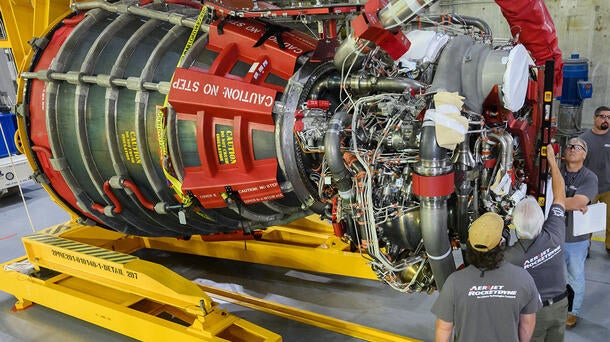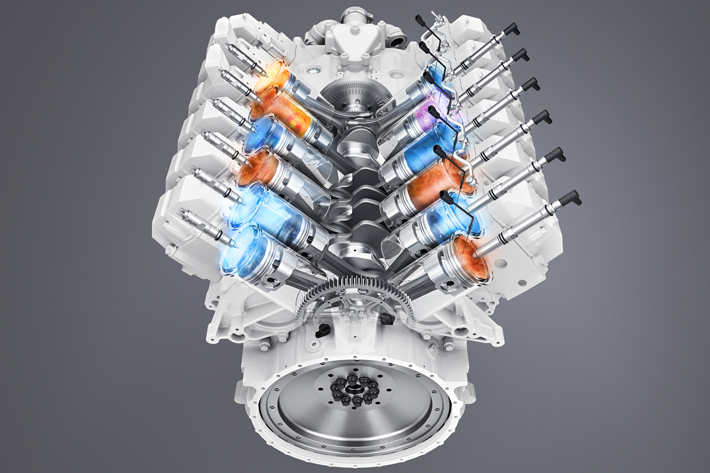The Evolution of High-Performance Automotive Powerplants: An Extensive Overview of Cutting-Edge Engine Technologies in the Modern Automotive Industry
The quest for extra effective, effective, and ecologically aware engines has led to a myriad of technologies that have improved the method we assume regarding auto power. From turbocharging advancements to the smooth integration of crossbreed powertrains, the realm of high-performance engine innovations proceeds to push limits and redefine opportunities.
Turbocharging Technologies
The development of high-performance vehicle powerplants has been considerably affected by continual developments in turbocharging advancements. Turbocharging has actually changed the vehicle sector by offering an extra efficient means of boosting engine power result without significantly boosting engine variation. By using exhaust gases to drive a turbine that compresses the incoming air right into the engine, turbochargers properly increase the air-fuel mix's density, causing improved combustion and higher horsepower levels.
Among the crucial innovations in turbocharging technology is the advancement of variable geometry turbos (VGTs) or variable nozzle wind turbines (VNTs) These systems enable for extra precise control over boost levels, decreasing turbo lag and enhancing engine reaction across a broader variety of RPMs. Furthermore, twin-scroll turbochargers have actually come to be preferred in high-performance applications as a result of their capacity to different exhaust pulses for far better power use.
Crossbreed Powertrain Combination
Continuing the trajectory of technological developments in vehicle powerplants, the assimilation of crossbreed powertrains marks a significant shift in the direction of boosting both performance and efficiency in contemporary cars. Hybrid powertrains combine traditional inner burning engines with electric motors, allowing for improved gas economic situation, minimized discharges, and enhanced power output (engines for africa). By seamlessly mixing the staminas of both power sources, crossbreeds use a flexible solution that deals with differing driving problems and needs
One key benefit of hybrid powertrain integration is the capacity to recapture energy throughout cruising or braking, saving it in the automobile's battery for later use. This regenerative stopping function not just improves efficiency yet also adds to prolonging the overall variety of the car. The instantaneous torque shipment of electrical motors complements the power shipment of internal combustion engines, resulting in boosted velocity and responsiveness.
Car manufacturers are continually refining crossbreed powertrain modern technologies, aiming to strike an equilibrium in between efficiency and sustainability. engines for africa. As consumer need for environment-friendly yet effective vehicles grows, the assimilation of crossbreed powertrains is positioned to play a pivotal role in shaping the future of auto propulsion systems

Advanced Gas Shot Equipments
With advancements in automotive technology, the application of sophisticated fuel injection systems has transformed the performance and efficiency of modern-day vehicles. These cutting-edge gas distribution systems have actually changed typical carburetors as a result of their remarkable accuracy in providing fuel to the engine. Direct fuel injection, where gas is splashed directly into the combustion chamber, allows for far better control over fuel-air combination, causing enhanced power outcome and fuel efficiency.
One of the key advantages of sophisticated fuel injection systems is their capacity to adjust to varying driving problems in real-time. This versatility guarantees optimal engine efficiency throughout different situations, whether it be throughout aggressive acceleration or travelling at a consistent speed. Additionally, modern-day fuel injectors are designed to atomize gas a lot more successfully, promoting cleaner burning and minimizing damaging emissions.
In addition, advanced gas injection systems play an essential duty in making it possible for the application of various other ingenious engine technologies, such as turbocharging and variable shutoff timing, further boosting the general power and performance of high-performance vehicle powerplants.
Performance-Enhancing Electronics

One secret modern technology that exhibits this is the Electronic Control Device (ECU), which works as the mind of the engine monitoring system. The ECU processes real-time data from various sensors to precisely regulate ignition timing, go to this web-site fuel shot, and have a peek at these guys various other crucial parameters, leading to enhanced power shipment and fuel effectiveness. Furthermore, innovations like variable shutoff timing (VVT) and electronic throttle control (ETC) further contribute to making best use of engine efficiency by readjusting shutoff opening times and throttle responses based on driving conditions.
Additionally, performance-enhancing electronic devices make it possible for attributes such as launch control, traction control, and flexible shock absorber, enhancing both the driving experience and overall vehicle performance. The constant development and integration of these sophisticated electronic systems continue to push the borders of auto design, causing a lot more powerful, efficient, and highly progressed high-performance cars.
Future Trends in Engine Growth
As vehicle powerplants advancement with the integration of performance-enhancing electronic devices, the trajectory of engine advancement is poised to welcome future patterns that will redefine the landscape of high-performance vehicles. One noticeable pattern on the horizon is the ongoing downsizing of engines without jeopardizing power output. This downsizing is attained with technologies like turbocharging and electrification, making it possible for smaller engines to supply the performance of bigger ones while enhancing gas effectiveness.
Another vital pattern is the raising adoption of crossbreed powertrains in high-performance automobiles. Crossbreed systems integrate inner combustion engines with electrical motors to enhance velocity and overall efficiency while reducing exhausts. Additionally, innovations in materials scientific research are driving the development of lighter and stronger engine parts, adding to boosted efficiency and power-to-weight ratios.
In addition, the industry is relocating in the direction of more lasting practices, with a growing focus on alternative fuels such as biofuels, hydrogen, and artificial gas. These environment-friendly alternatives not only decrease the ecological impact of high-performance cars however additionally provide chances for more enhancing engine click to read more performance. On the whole, the future of engine growth in the automotive market is identified by technology, efficiency, and sustainability.
Conclusion
Finally, the automobile market has actually seen considerable improvements in high-performance engine modern technologies, consisting of turbocharging technologies, crossbreed powertrain assimilation, progressed gas shot systems, and performance-enhancing electronics. These advancements have actually reinvented the abilities of contemporary powerplants, causing enhanced effectiveness, power output, and overall performance of vehicles. As technology proceeds to advance, future fads in engine advancement are anticipated to even more improve the performance and sustainability of automotive powerplants.
Turbocharging has actually changed the vehicle market by offering a more reliable methods of boosting engine power output without significantly raising engine variation.As automobile powerplants advance with the integration of performance-enhancing electronic devices, the trajectory of engine advancement is poised to welcome future patterns that will redefine the landscape of high-performance lorries. Generally, the future of engine development in the auto market is characterized by performance, sustainability, and advancement.
In final thought, the auto market has actually seen considerable innovations in high-performance engine innovations, consisting of turbocharging developments, crossbreed powertrain integration, progressed gas injection systems, and performance-enhancing electronic devices. As innovation proceeds to develop, future patterns in engine advancement are anticipated to additionally boost the efficiency and sustainability of automobile powerplants.